
Glaretum fundado en el 2015 con el objetivo de divulgar la ciencia a través de la Astronomía hasta convertirnos en una fuente de conocimiento científico veraz siendo garantía de información seria y actualizada.
248 posts
Latest Posts by glaretum - Page 6
Un analema es esa curva en forma de 8 que se obtiene cuando se marca la posición del Sol a la misma hora todos los días durante un año.
Pero el truco para obtener imágenes de un analema de la Luna es esperar un poco más. En promedio, la Luna vuelve a la misma posición en el cielo unos 50 minutos y 29 segundos más tarde cada día. Así que se fotografió la Luna 50 minutos y 29 segundos más tarde en días sucesivos.
Durante una lunación o mes lunar, trazará una curva similar a un analema a medida que la posición real de la Luna se desvía debido a su órbita inclinada y elíptica. Para crear esta imagen compuesta de un analema lunar, el astrónomo Gyorgy Soponyai eligió un mes lunar del 26 de marzo al 18 de abril del 2020 con un buen tiempo y un sitio cerca de casa cerca de Mogyorod, Hungría.
Crédito: Gyorgy Soponyai

La Nebulosa Helix es uno de los ejemplos más brillantes y cercanos de una nebulosa planetaria, una nube de gas creada al final de la vida de una estrella similar al Sol. Los gases exteriores de la estrella expulsados al espacio aparecen desde nuestro punto de vista como si estuviéramos mirando hacia una hélice. El núcleo estelar central remanente, destinado a convertirse en una estrella enana blanca, brilla con una luz tan enérgica que hace que el gas previamente expulsado tenga fluorescencia. La Nebulosa Helix, que recibió la designación técnica de NGC 7293, se encuentra a unos 700 años luz de distancia hacia la constelación del Portador de Agua (Acuario) y se extiende por unos 2,5 años luz. La imagen presentada fue tomada con el Telescopio Canadá-Francia-Hawái (CFHT) ubicado sobre un volcán inactivo en Hawái, EE. UU. Un primer plano del borde interior de la Nebulosa Helix muestra complejos nudos de gas de origen desconocido.
Crédito: CFHT, Coelum, MegaCam, J.-C. Cuillandre (CFHT) y G. A. Anselmi (Coelum)

Increíble fotografía de la conjuncion de Jupiter y Saturno que nos acaban de compartir. Este tipo de fenómeno ocurre entre 4 y 5 veces en 100 años, pero es inusual ver los planetas tan cercas como en esta ocasión. La última vez que se vieron así de cerca fue hace más de 400 años.
Crédito: @ThierryLegault
https://www.facebook.com/thierry.legault.5



Amanecer del 2 de Enero, cerca del Lago Ontario en Canada.
Hoy nuestro planeta pasó por su Perihelio, es decir, por el punto de su órbita más cercano al Sol. En ese momento, aunque sea imperceptible para los humanos, viajamos la endiablada velocidad de 110.700 kilómetros por hora (o, lo que es lo mismo, 30,75 kilómetros por segundo).
Crédito: Steven A. Sweet
Lunar 101-Moon Book

Rocket Launches and Rising Seas
At NASA, we’re not immune to effects of climate change. The seas are rising at NASA coastal centers – the direct result of warming global temperatures caused by human activity. Several of our centers and facilities were built near the coast, where there aren’t as many neighbors, as a safety precaution. But now the tides have turned and as sea levels rise, these facilities are at greater risk of flooding and storms.

Global sea level is increasing every year by 3.3 millimeters, or just over an eighth of an inch, and the rate of rise is speeding up over time. The centers within range of rising waters are taking various approaches to protect against future damage.

Kennedy Space Center in Florida is the home of historic launchpad 39A, where Apollo astronauts first lifted off for their journey to the Moon. The launchpad is expected to flood periodically from now on.

Like Kennedy, Wallops Flight Facility on Wallops Island, Virginia has its launchpads and buildings within a few hundred feet of the Atlantic Ocean. Both locations have resorted to replenishing the beaches with sand as a natural barrier to the sea.

Native vegetation is planted to help hold the sand in place, but it needs to be replenished every few years.

At the Langley Research Center in Hampton, Virginia, instead of building up the ground, we’re hardening buildings and moving operations to less flood-prone elevations. The center is bounded by two rivers and the Chesapeake Bay.
The effects of sea level rise extend far beyond flooding during high tides. Higher seas can drive larger and more intense storm surges – the waves of water brought by tropical storms.

In 2017, Hurricane Harvey brought flooding to the astronaut training facility at Johnson Space Center in Houston, Texas. Now we have installed flood resistant doors, increased water intake systems, and raised guard shacks to prevent interruptions to operations, which include astronaut training and mission control.

Our only facility that sits below sea level already is Michoud Assembly Facility in New Orleans. Onsite pumping systems protected the 43-acre building, which has housed Saturn rockets and the Space Launch System, from Hurricane Katrina. Since then, we’ve reinforced the pumping system so it can now handle double the water capacity.

Ames Research Center in Silicon Valley is going one step farther and gradually relocating farther south and to several feet higher in elevation to avoid the rising waters of the San Francisco Bay.
Understanding how fast and where seas will rise is crucial to adapting our lives to our changing planet.

We have a long-standing history of tracking sea level rise, through satellites like the TOPEX-Poseidon and the Jason series, working alongside partner agencies from the United States and other countries.

We just launched the Sentinel-6 Michael Freilich satellite—a U.S.-European partnership—which will use electromagnetic signals bouncing off Earth’s surface to make some of the most accurate measurements of sea levels to date.
Make sure to follow us on Tumblr for your regular dose of space: http://nasa.tumblr.com.
Vía láctea desde Hutchins Creek
Crédito: John O'Connell
John O'Connell Photography
www.flyingbytheseatofourplans.blogspot.com

Una gran eyección de masa coronal se produjo en nuestro Sol cinco días antes de que se tomara esta imagen de 2012, lanzando una nube de electrones, protones e iones en rápido movimiento hacia la Tierra. Aunque la mayor parte de esta nube pasó por encima de la Tierra, parte de ella impactó la magnetosfera de nuestra Tierra y dio como resultado auroras espectaculares que se vieron en las altas latitudes del norte. Aquí se muestra una corona auroral particularmente fotogénica capturada sobre Grotfjord, Noruega. Para algunos, este resplandor verde resplandeciente de oxígeno atmosférico recombinado puede parecer un águila grande, pero no duden en compartir cómo se ve.
Crédito: Bjørn Jørgensen
www.arcticphoto.no

La Vía Láctea no se ve tan colorida y brillante a la vista, pero el lanzamiento de un cohete sí. Desde Refugio Nacional Merritt Island Wildlife, una exposición de nueve minutos de duración registró la imagen de la vía láctea y el lanzamiento y aterrizaje de un cohete Falcon 9 la mañana del 4 de mayo del 2020. La pluma y la llamarada en la cima del arco de lanzamiento marcan el retroceso del impulso de la primera etapa del cohete. Dos líneas diagonales más cortas son los motores de cohete que llevan la etapa Falcon 9 de regreso a un aterrizaje en alta mar en la plataforma "Of course I Still Love You."
Crédito: Devin Boggs

NEOWISE
El polvo de cometa cae a través de un cielo crepuscular en esta escena onírica, pero no es parte de una película de cuento de hadas.
Capturado el 20 de julio, la racha brillante sobre las torres del castillo es probablemente un meteoro de las Perseidas.
Crédito: Stephane Guisard

Nebulosa Pacman NGC 281
NGC 281 es una nebulosa de emisión ubicada en la constelación de Cassiopeia, conocida informalmente como la Nebulosa Pacman debido a su sorprendente parecido con un popular protagonista de videojuegos. Tiene un diámetro de 48 años luz y contiene varios glóbulos de Bok, así como un pequeño cúmulo de estrellas abierto (IC 1590). Las líneas oscuras de polvo que se cortan en brillantes nubes de gas crean la forma de "boca" que le da a la nebulosa su apodo.
NGC 281 fue identificado por primera vez en 1883 por el astrónomo y astrofotógrafo estadounidense E.E. Barnard. Barnard, mejor conocido por su descubrimiento de la Star3 de Barnard en 1916, señaló a NGC 281 como, "una gran nebulosa tenue, muy difusa" al descubrirla.
Tarjeta técnica:
Telescopio de imágenes: Explore Scientific 127 mm ED TRIPLET APO.
Cámara de imágenes: ZWO ASI294MM-Pro.
Montaje: iOptron CEM60.
Marcos:
Chroma 3nm Ha: 10x600 "(ganancia: 200,00) -20C bin 1x1
Chroma 3nm OIII: 10x600 "(ganancia: 200,00) -20C bin 1x1
Chroma 3nm SII: 10x600 "(ganancia: 200,00) -20C bin 1x1
Tiempo total de exposición: 5,0 horas.
Escala de píxeles: 0,706 segundos de arco / píxel. Escala Bortle Dark-Sky: 4,00.
Temperatura: 18,00.
Desierto de Abu Dhabi, Emiratos Árabes Unidos.
12 de diciembre de 2020, 13 de diciembre de 2020.
📸 Wissam Ayoub
@interstellar_uae

Gran conjunción Júpiter y Saturno desde Buraq, UAE
Crédito: Prabhu S Kutti
Instagram.com/prabhuskutti/
www.prabhuastrophotography.com

Eclipse Total Solar 2010
Crédito: Andreas Möller

Eclipse Solar Total 2020 desde Valcheta, Río negro en Argentina
Crédito: Pablo Barrios
Instagram.com/Pd.barrios

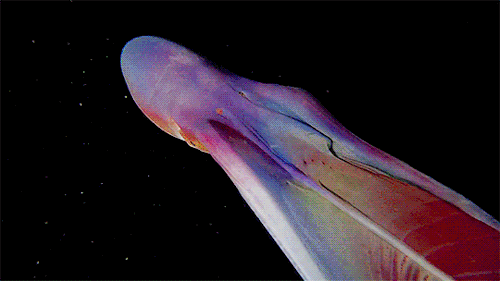
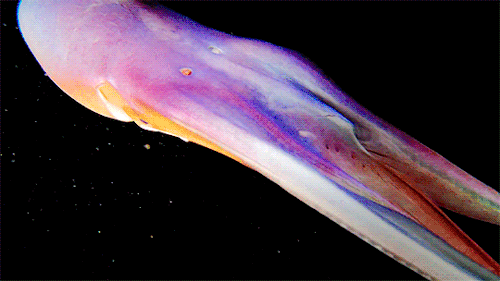
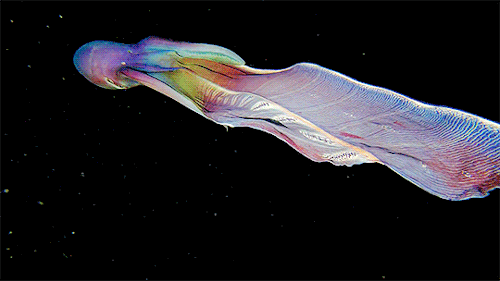
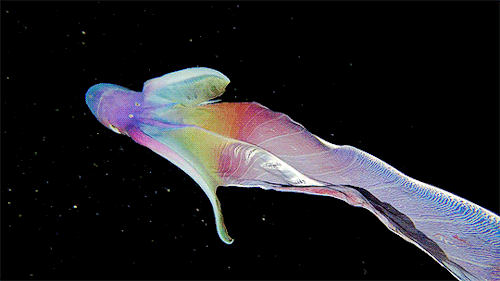
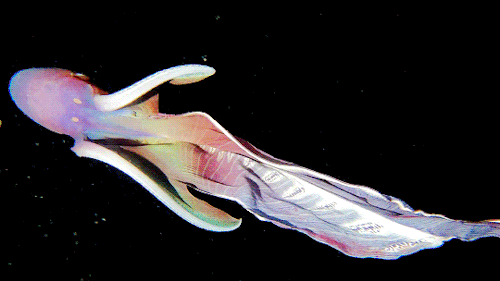
A close up of the Blanket Octopus during a blackwater dive with The Three P diving club , Romblon Island, Philippines. Credit: Joseph Elayani
The Great Conjunction of Jupiter and Saturn

Credits: NASA/Bill Ingalls
Have you noticed two bright objects in the sky getting closer together with each passing night? It’s Jupiter and Saturn doing a planetary dance that will result in the Great Conjunction on Dec. 21. On that day, Jupiter and Saturn will be right next to each other in the sky – the closest they have appeared in nearly 400 years!
Skywatching Tips from NASA

Credits: NASA/JPL-Caltech
For those who would like to see this phenomenon for themselves, here’s what to do:
Find a spot with an unobstructed view of the sky, such as a field or park. Jupiter and Saturn are bright, so they can be seen even from most cities.
An hour after sunset, look to the southwestern sky. Jupiter will look like a bright star and be easily visible. Saturn will be slightly fainter and will appear slightly above and to the left of Jupiter until December 21, when Jupiter will overtake it and they will reverse positions in the sky.
The planets can be seen with the unaided eye, but if you have binoculars or a small telescope, you may be able to see Jupiter’s four large moons orbiting the giant planet.
How to Photograph the Conjunction

Credits: NASA/Bill Dunford
Saturn and Jupiter are easy to see without special equipment, and can be photographed easily on DSLR cameras and many cell phone cameras. Here are a few tips and tricks:
These planets are visible in the early evening, and you’ll have about 1-2 hours from when they are visible, to when they set. A photo from the same location can look completely different just an hour later!
Using a tripod will help you hold your camera steady while taking longer exposures. If you don’t have a tripod, brace your camera against something – a tree, a fence, or a car can all serve as a tripod for a several-second exposure.
The crescent Moon will pass near Jupiter and Saturn a few days before the conjunction. Take advantage of it in your composition!
Get more tips HERE.
Still have questions about the Great Conjunction?
Our NASA expert answered questions from social media on an episode of NASA Science Live on Thursday, Dec. 17. Watch the recording HERE.
Make sure to follow us on Tumblr for your regular dose of space: http://nasa.tumblr.com.
Saturno, arriba y Júpiter, abajo, se ven después del atardecer desde el Parque Nacional Shenandoah, el domingo 13 de diciembre de 2020, en Luray, Virginia. Los dos planetas se están acercando en el cielo a medida que se dirigen hacia una "gran conjunción" el 21 de diciembre, donde los dos planetas gigantes aparecerán separados por una décima de grado.
Crédito: Bill Ingalls

Gemínida en Colorado, Estados Unidos.
Crédito: Lars Leber
www.larsleber.com

¡Hay lugares que pueden encantarnos por su singular belleza!
Ruinas de la capilla de S. João (Castillo de Monsanto)
Nikon D610 | Walimex Pro 14 mm f / 2.8 ED COMO SI UMC | F / 2.8 | 10 fotos x 20 años | ISO: 1250
Crédito: Carreto
https://www.facebook.com/filipecarretofotografia/

Laying the Groundwork for a New Generation of Commercial Supersonic Aircraft
Cabin crew, prepare for takeoff. Engines roar; speed increases. You sip a cold beverage as the aircraft accelerates quietly past Mach 1 or around 600 mph. There’s no indication you’re flying over land faster than the speed of sound except when you glance at your watch upon arrival and see you’ve reached your destination in half the time. You leisurely walk off the plane with ample time to explore, finish a final report or visit a familiar face. This reality is closer than you think.

We’re on a mission to help you get to where you want to go in half the time. Using our single-pilot X-59 Quiet SuperSonic Technology (QueSST) research aircraft, we will provide rule-makers the data needed to lift current bans on faster-than-sound air travel over land and help enable a new generation of commercial supersonic aircraft.

The X-59 QueSST is unique in shape. Each element of the aircraft’s design will help reduce a loud sonic boom, typically produced by conventional supersonic aircraft, to a gentle sonic thump, making it quieter for people on the ground. To prove the quiet technology works, we will fly the X-59 over select U.S. communities to gauge the public’s response to the sound.

We are working with Lockheed Martin in Palmdale, California, to manufacture the X-59 and are making significant progress, despite the pandemic.

We finished the majority of work on the wing and closed its interior, marking the halfway point on construction of the aircraft.

The X-59 team at Lockheed Martin completed the final touches by fastening skins to the wing. A special sealant is applied so that fuel can be carried in the wings of the aircraft.

Moving at a steady pace, technicians continue to work on many parts of the aircraft simultaneously. The forebody section of the aircraft will carry the pilot and all the avionics needed to fly the aircraft.

Because of the X-59’s long nose, the pilot will rely on an eXternal Vision System (XVS), rather than a window, for forward-facing visibility. The XVS will display fused images from an advanced computing system and cameras mounted on the upper and lower part of the aircraft’s nose.

The aft part of the aircraft will hold an F414 GE engine and other critical systems. Unlike typical aircraft, the engine inlet will be located on the upper surface of the X-59 and is one of many features that will help reduce the noise heard on the ground.

Over the next several months, the team will merge all three sections together. After final assembly in 2021, the X-59 will undergo numerous tests to ensure structural integrity of the aircraft and that ¬its components work properly. First flight of the aircraft will be in 2022 and community testing will start in 2024, making way for a new market of quiet commercial supersonic aircraft.

Want to learn more about the X-59 and our mission? Visit nasa.gov/X59.
Make sure to follow us on Tumblr for your regular dose of space: http://nasa.tumblr.com.
Lanzamiento exitoso #PSLVC50
Foto: ISRO - Indian Space Research Organisation

La Luna Júpiter y Saturno
Crédito: Franco Sc

Aurora Boreal
Crédito: Willy Laboulle Photographe Paysage Workshop Photos
www.WillyLaboulle.com

Eclipse Total Solar desde Santa Fe, Argentina
Credito: Eduardo Schaberger Poupeau
www.ruralskies.ar

Gemínida desde China
Crédito: Steed Yu

Eclipse Solar Total desde Neuquen, Argentina 🇦🇷
Crédito: Matias Cordero
Matias Cordero Fotografía

Gemínidas desde Australia
Crédito: Claire Gore

Eclipse solar 2020
Crédito: Gerardo Ferrarino.
https://www.facebook.com/gferrarino

Eclipse Total de Sol desde Piedra del Águila, Argentina
Crédito: Natacha Pisarenko

Get to Know the 5 College Teams Sending Their Experiments to Space!
Did you know that YOU (yes you!), can send science experiments to the International Space Station?
To celebrate 20 years of continuous human presence on the International Space Station, NASA STEM on Station is sending five student experiments to the space station through Student Payload Opportunity with Citizen Science (SPOCS). Selected teams will also engage K-12 students as a part of their experiment through citizen-science.
Get to know the 5 college teams sending their experiments to space!
Arkansas State University
Team: A-State Science Support System

Experiment Title: Microgravity Environment Impact on Plastic Biodegradation by Galleria mellonella
Experiment Description: Discover the ability of wax worms to degrade plastics in space.
Why did you propose this experiment?
Our team’s passion for sustainability developed into novel ideas for space travel through biodegradation of plastics.
How will the experiment benefit humankind or future space exploration?
If our experiment is successful, it will “launch” us closer to understanding how to reduce humankind’s plastic footprint on Earth and allow us to safely push farther into unknown planetary habitats.
How have you worked together as a team during the pandemic?
Unknown to each other before the project, our interdisciplinary team formed through virtual communication.
What science fiction character best represents your team and why?
The sandworms of Dune represent our team perfectly considering their importance in space travel, the natural ecological service they provide, and their sheer awesomeness
Columbia University
Team: Columbia Space Initiative

Experiment Title: Characterizing Antibiotic Resistance in Microgravity Environments (CARMEn)
Experiment Description: Discover the impact of mutations on bacteria in microgravity when grown into a biofilm with fungus.
Why did you propose this experiment?
As a highly interdisciplinary team united by our love of outer space, SPOCS was the perfect opportunity to fuse biology, engineering, and education into a meaningful team project.
How will the experiment benefit humankind or future space exploration?
Studying how different microorganisms interact with each other to develop bacterial resistance in space will help improve antibiotic treatments for future Artemis astronauts.
How have you worked together as a team during the pandemic?
Most of our team actually hasn’t ever met in person—we’ve been videoconferencing weekly since May!
What science fiction character best represents your team and why?
Our team is definitely Buzz Lightyear from Toy Story, because we strive to reach infinity (or at least the International Space Station) and beyond!
Stanford University
Team: Stanford Student Space Initiative

Experiment Title: Biopolymer Research for In-Situ Capabilities (BRIC)
Experiment Description: Determine how microgravity impacts the solidification of biobricks.
Why did you propose this experiment?
We have an ongoing project to design and build a machine that turns lunar or Martian soil into bricks, and we want to learn how reduced gravity will impact the process.
How will the experiment benefit humankind or future space exploration?
We are studying an environmentally-friendly concrete alternative that can be used to make structures on Earth and other planets out of on-site, readily available resources.
How have you worked together as a team during the pandemic?
We transitioned our weekly meetings to an online format so that we could continue at our planned pace while maintaining our community.
What science fiction character best represents your team and why?
Like our beloved childhood friend WALL-E, we craftily make inhospitable environments suitable for life with local resources.
University of Idaho
Team: Vandal Voyagers I

Experiment Title: Bacteria Resistant Polymers in Microgravity
Experiment Description: Determine how microgravity impacts the efficacy of bacteria resistant polymers.
Why did you propose this experiment?
The recent emphasis on surface sterility got us thinking about ways to reduce the risk of disease transmission by surfaces on the International Space Station.
How will the experiment benefit humankind or future space exploration?
If successful, the application of proposed polymers can benefit humankind by reducing transmission through high contact surfaces on and off Earth such as hand rails and door handles.
How have you worked together as a team during the pandemic?
We are allowed to work collaboratively in person given we follow the current university COVID guidelines.
What science fiction character best represents your team and why?
Mark Watney from The Martian because he is willing to troubleshoot and problem solve on his own while collaborating with NASA from afar.
University of New Hampshire at Manchester
Team: Team Cooke

Experiment Title: Novel Methods of Antibiotic Discovery in Space (NoMADS)
Experiment Description: Determine how microgravity impacts the amount of bacterium isolates that produce antibiotic metabolites.
Why did you propose this experiment?
To contribute to the limited body of knowledge regarding bacterial resistance and mutations in off-Earth conditions.
How will the experiment benefit humankind or future space exploration?
Understanding how bacteria in the human microbiome and on spacecraft surfaces change can ensure the safe and accurate treatment of bacterial infections in astronauts.
How have you worked together as a team during the pandemic?
Our team continued to evolve our communication methods throughout the pandemic, utilizing frequent remote video conferencing, telecommunications, email, and in-person conferences.
What science fiction character best represents your team and why?
Professor Xavier, the founder of the X-Men, because he also works with mutants and feels that while they are often misunderstood, under the right circumstances they can greatly benefit the world.
Make sure to follow us on Tumblr for your regular dose of space: http://nasa.tumblr.com.
